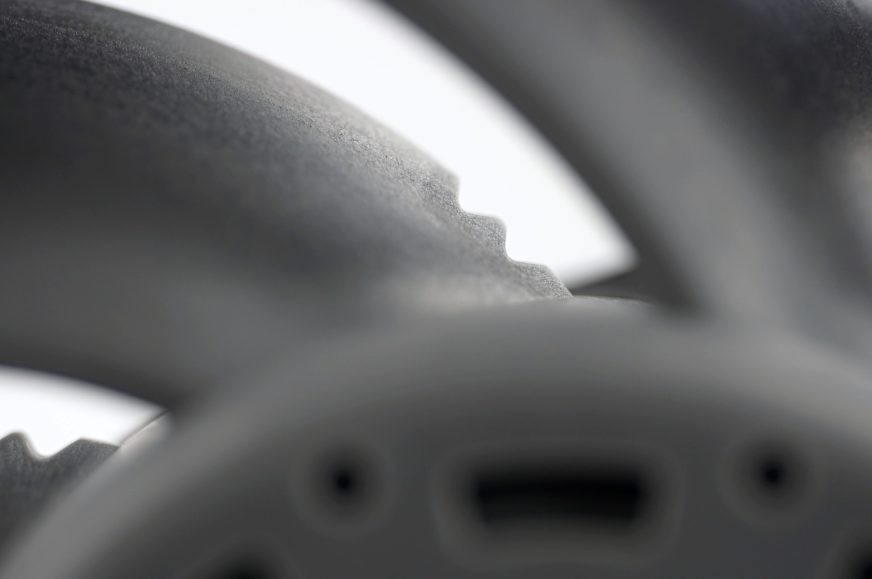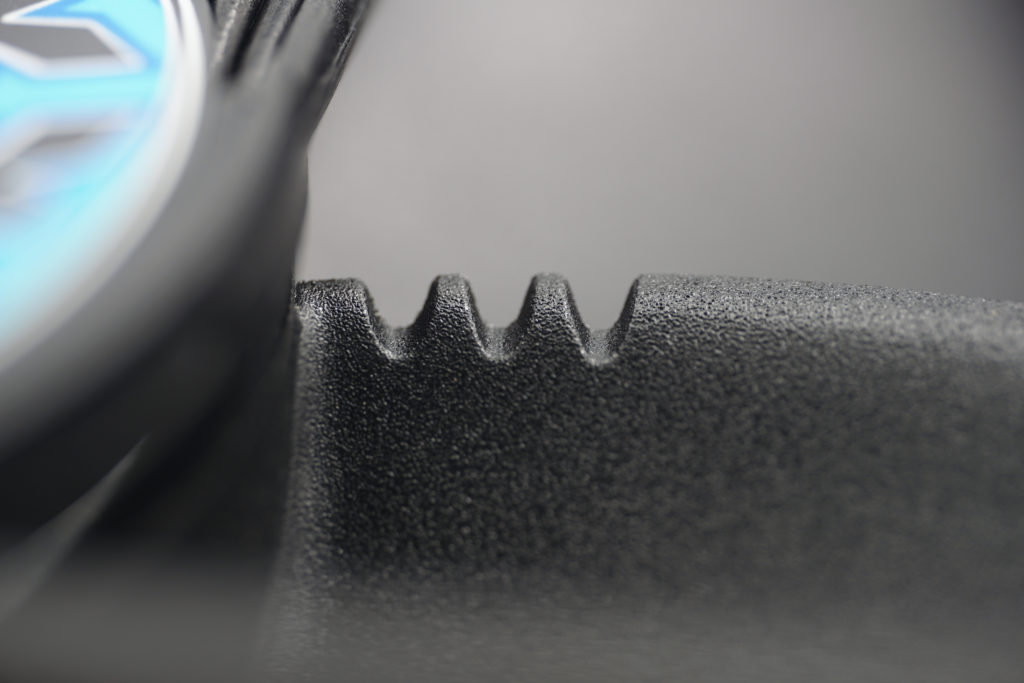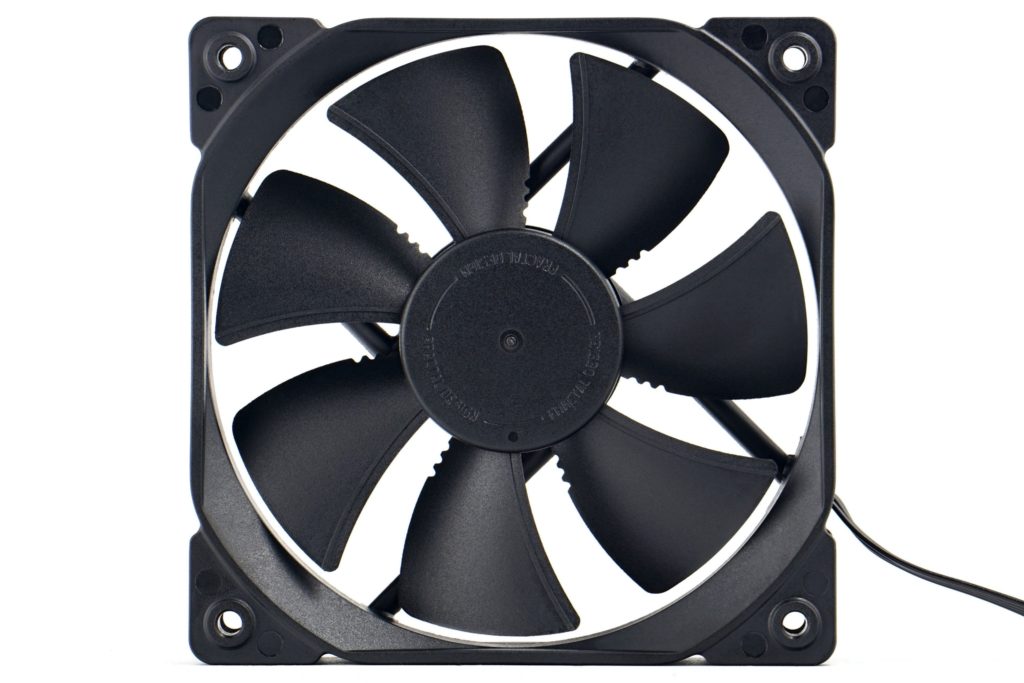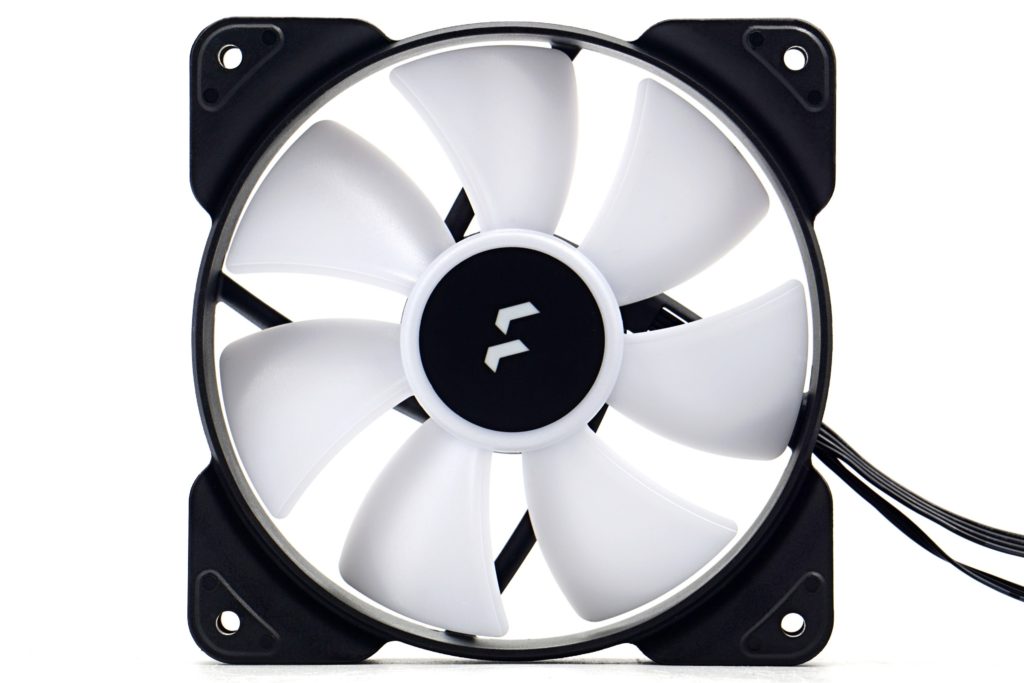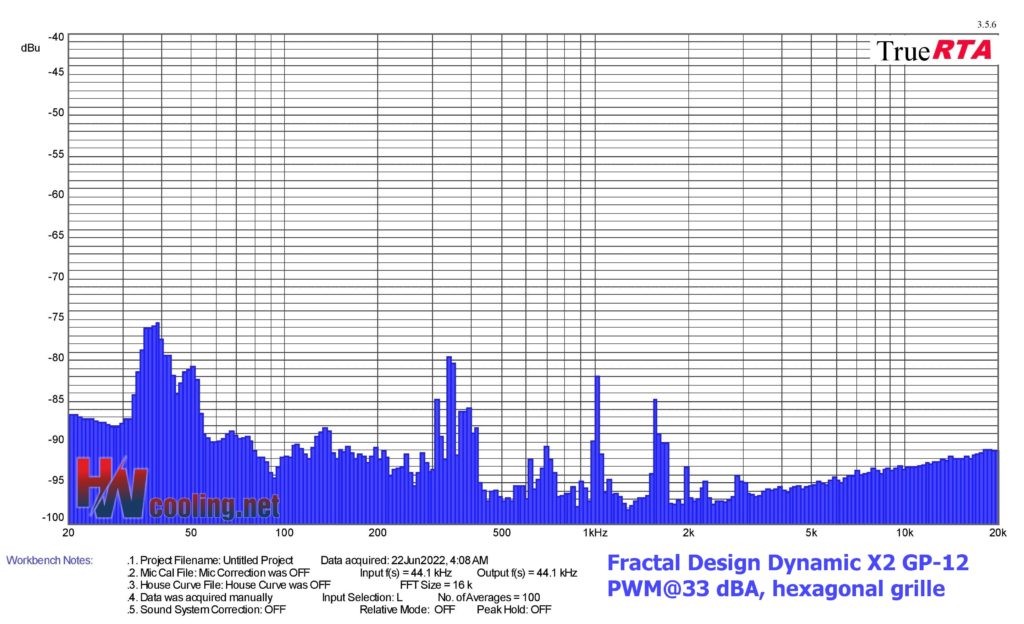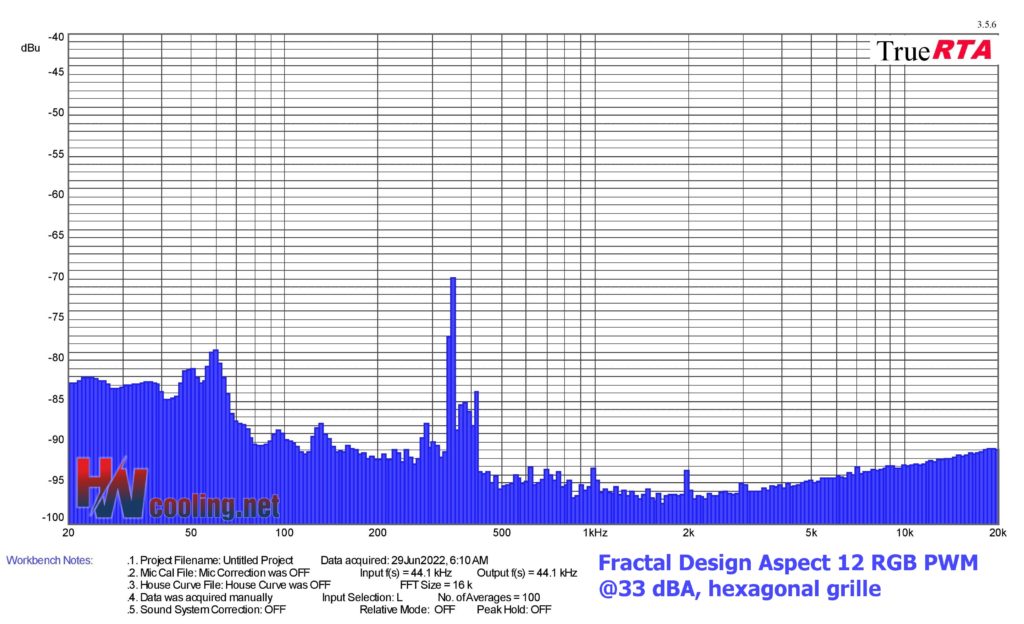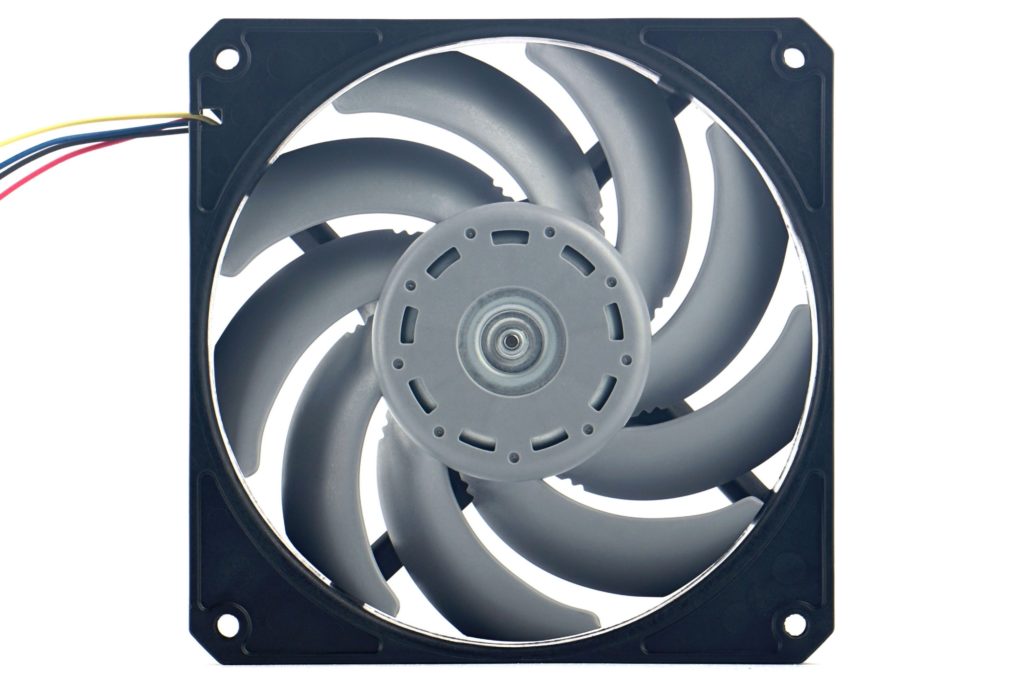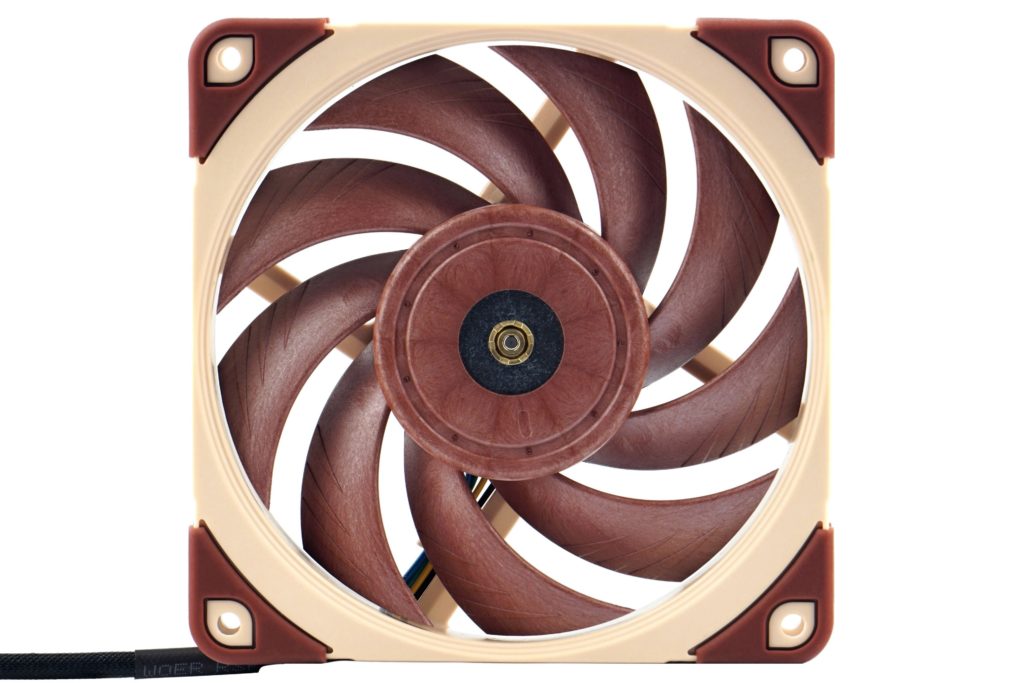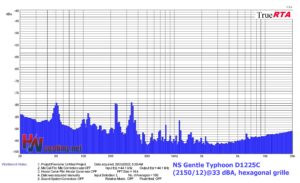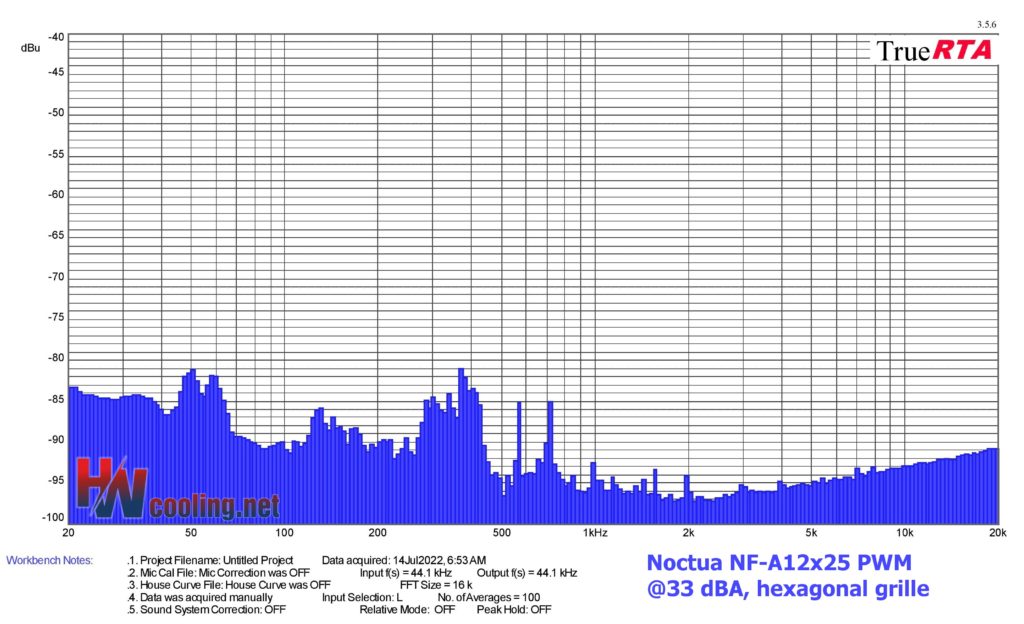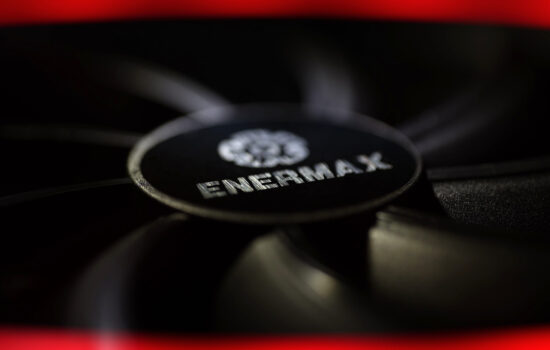Possible impact of notches, the acoustic
On edges of blades of some fans there are small notches forming a kind of teeth, typically on the trailing edges, closer to the motor. These elements serve to break up tonal peaks, and it’s curious that manufacturers are abandoning them rather than adding them. In some designs, however, such a modification can be seen as a backwards move; elsewhere it’s an understandable one. We have a few examples for you.
You’re already familiar with the little notches on the edges of the fan blades from some fans. Not all of them have them, but you’ll find them on quite a few models. The role of these notches is to break up and thus mitigate the dominant sound frequencies from aerodynamic airflow in certain situations. How this works in practice is well seen from the analysis of Fractal Design fans – the Dynamic X2 GP-12 (PWM) and the Aspect 12 (RGB)/PWM.
These are fans with very similar rotors, which differ precisely in the fact that the Dynamic has these teeth/notches and the Aspects no longer do. Fractal Design simply dropped them from the design of the newer fans, which makes for a striking comparison.
Fans with wide-tipped blades and smaller leading-edge curvature often do not fare well on a hexagonal grille when it comes to acoustic expression. Although it does not suit any fan and all of them experience a significant increase in noise due to the large amount of microturbulence on the sharp edges (of the grille), the above-mentioned designs are particularly affected by the grille. This is because they significantly amplify the critical “rumbly” sound frequencies somewhere around 350 Hz.
This also applies to the Fractal Design Aspect 12. We picked this fan because it is based on the Dynamic X2 GP-12, on which Fractal Design still made notches at the beginning of the blades on the trailing edges, and indeed it wasn’t a bad idea. Notice how huge the difference is at the dominant midrange frequencies of the sound. The Dynamic X2 GP-12 is 9.8 dBu quieter at 339 Hz than the Aspect 12 at 349 Hz. And that’s in a situation where these fans find themselves most often – at lower speeds (since these are primary system fans) on a grille of a computer case. In this application, at the same overall noise level in dBA (i.e. the average of all frequencies), the Dynamic X2 GP-12 PWM also achieves a higher airflow. This is natural, as the Aspect 12’s frequency peak presents a bottleneck to tuning to equal dBA, which does not allow the speed to be reduced sufficiently.
In other conditions, where the critical midrange frequencies are not amplified this much (e.g. on a radiator), the Aspect 12 already has the upper hand. However, from the perspective of use in a case on a grille, the absence of notches on the Aspects is a disadvantage. These are usually more effective than the Dynamic X2 GP-12 in other circumstances due to such things as a smaller gap between the blades and the frame, or tighter frame-to-body contact with an obstacle. This results in higher static pressure, which is in turn reduced by the slightly more flexible Aspect 12 RGB (PWM) blades in a system with a more restrictive environment with increasing speeds. So they are not exactly identical fans, differing only by those teeth, but as far as acoustic properties on a grille are concerned, they depend on them, and the Aspect 12 with teeth would be guaranteed to be quieter. To analyse the totally accurate effect of the notches in this design would require something reliable to fill those notches. And very accurately so, so that the rotor doesn’t lose good balance. Some home-made “filling” is out of the question (what would mainly be reflected in spectral analyses would be its technical imperfections).
Similar designs with and without notches are also found on the Gentle Typhoon (D1225C12B6ZPAA6) and Noctua NF-A12x25 fans. Here the situation is a little different. The basic geometry of the rotor is significantly different, and naturally the trajectory of the air streams is also different.
Again, we took the same testing mode (“33 dBA”) and the same test environment (hexagonal grille) as with the Fractal Design fans. The effect of the notches on the Gentle Typhoon’s performance is shown by two similarly high increases, one with a peak at 226 Hz and the other with a peak at 339 Hz. With the Noctua NF-A12x25, you don’t see it, or rather hear it this way – there’s only one increase, a more massive one, with a peak at 370 Hz.
Importantly, however, this most intense frequency is quieter than any of the Gentle Typhoon peaks, by 2–2.5 dBA. This means that, unlike the FD Aspect 12, the notches on the Noctua NF-A12x25 would be unnecessary even when used on a grille. We have also approached Noctua with a question regarding the (non-)use of these notches. Noctua didn’t see any justification for them in these places (at the beginning of the blade). In connection with this type of rotor on the NF-A12x25, Noctua is right. There really is no need to lower the critical peak on the NF-A12x25. It is not present in the sound even when the fan does not have teeth on the trailing edges.
However, Noctua has experience with notches on its fans (on the NF-F12 even unconventionally on stator struts), for example on the NF-P12 (redux). However, these are on the opposite side to those of the Gentle Typhoon (or FD Dynamic X2). They are still on the trailing edge, but closer to the tip of the blade.
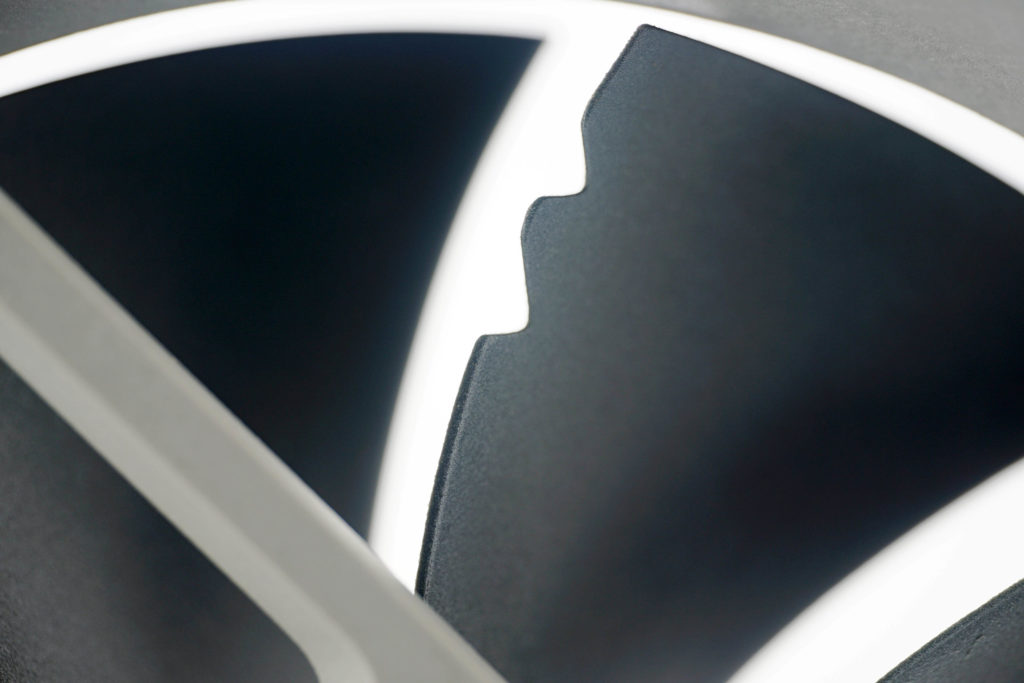
According to Noctua, this placement is much more useful because there are much more intense microturbulence at this point on the intake side which the notches are supposed reduce. And undoubtedly they do reduce them, but in critical situations they do not resolve the tonal spikes on the hexagonal grille. The NF-P12 redux doesn’t do too well on that one, and at 329 Hz this fan is virtually as noisy as the FD Aspect 12. Significantly quieter, as you already know from the analysis above, is here (at the dominant sound frequencies) only the Dynamic X2 with the notches in a place Noctua considers irrelevant. There are indeed smaller microturbulences at the rotor blade hub, but they are still significant enough to get the sound into unpleasant resonant frequencies with the grille.
English translation and edit by Jozef Dudáš





